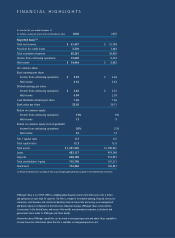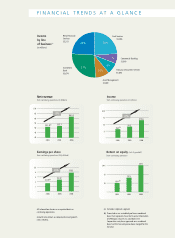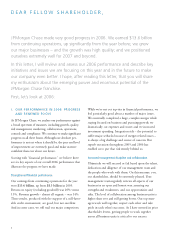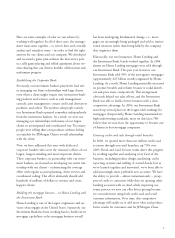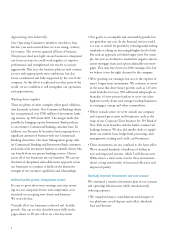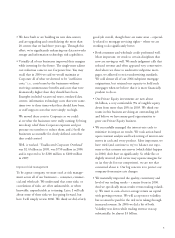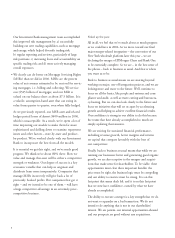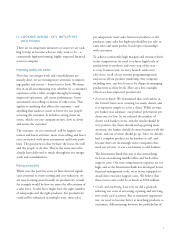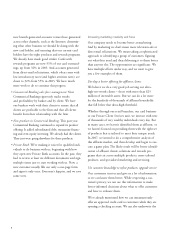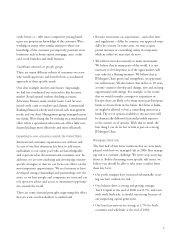JP Morgan Chase 2006 Annual Report Download - page 7
Download and view the complete annual report
Please find page 7 of the 2006 JP Morgan Chase annual report below. You can navigate through the pages in the report by either clicking on the pages listed below, or by using the keyword search tool below to find specific information within the annual report.5
• We have built or are building six new data centers,
and are upgrading and consolidating the more than
20 centers that we had three years ago. Through this
effort, we’re significantly enhancing our data networks
storage and information technology risk capabilities.
• Virtually all of our businesses improved their margins
while investing for the future. The single-most salient
cost reduction came in our Corporate line. You may
recall that in 2004 we said we would maintain at
Corporate all of what we deemed to be “inefficient
costs,” i.e., costs borne by the businesses without
receiving commensurate benefits and costs that were
dramatically higher than they should have been.
Examples included vacant real estate, outdated data
centers, information technology costs that were some-
times two to three times what they should have been,
or staff support costs that were simply too high.
We moved these costs to Corporate so we could:
a) see what the businesses were really earning; b) bring
into sharp relief these Corporate expenses and put
pressure on ourselves to reduce them; and c) hold the
businesses accountable for clearly defined costs that
they could control.
Well, it worked. “Unallocated Corporate Overhead”
was $2.4 billion in 2005, was $750 million in 2006
and is expected to be $200 million to $400 million
in 2007.
Improved risk management
To be a great company, we must excel at risk manage-
ment across all of our businesses – consumer, commer-
cial and wholesale. We understand that some risks, or
correlations of risks, are often unknowable, or when
knowable, unpredictable as to timing. Later, I will talk
about some of these risks we face going forward, but
here I will simply review 2006. We think we did a fairly
good job overall, though there are some areas – especial-
ly related to mortgage servicing rights – where we are
working to do significantly better.
• Both consumer and wholesale credit performed well.
More important, we stuck to certain disciplines that
now are serving us well. We made judgment calls that
reduced revenue and often appeared very conservative.
And where we chose to underwrite subprime mort-
gages, we adhered to strict underwriting standards.
We sold almost all of our 2006 subprime mortgage
originations, but retained our capacity to hold such
mortgages when we believe that it is more financially
prudent to do so.
• Our Private Equity investments are now about
$6 billion, a very comfortable 9% of tangible equity,
down from more than 20% in 2003. We think our
teams in this business are doing an outstanding job
and believe we have many good opportunities to
grow our Private Equity business.
• We successfully managed the interest-rate cycle to
minimize its impact on results. We took action based
upon constant analysis and back-testing of interest-rate
moves in each and every product. More important, we
have tried (and continue to try) to balance our expo-
sures so that extreme rate moves (which didn’t happen
in 2006) don’t hurt us significantly. So while flat or
slightly inverted yield curves may squeeze margins for
us (as they do for our competitors), we are not that
concerned about it. Our big concern is to protect our
company from major rate changes.
• We materially improved the quality, consistency and
level of our trading results – a major focus in 2006.
And we specifically mean results versus trading volatili-
ty. We want to earn a better average return on capital
with growing revenue. We will accept more volatility,
but we must be paid for the risk we’re taking through
increased revenue. In 2006 we did a bit of both.
Volatility was down while trading revenue was up
substantially, by almost $3 billion.


